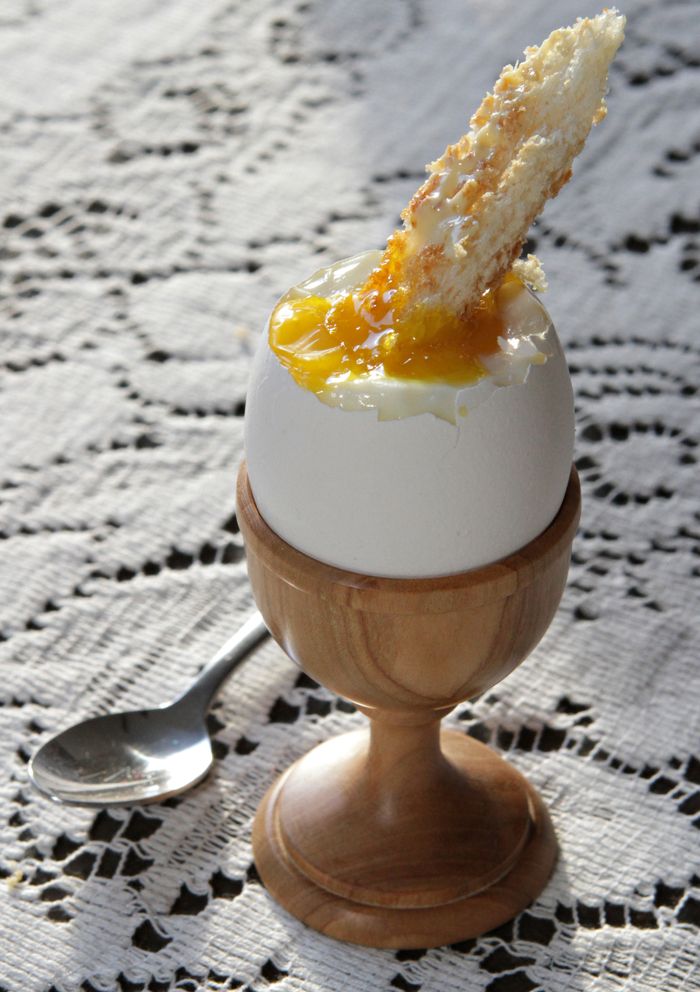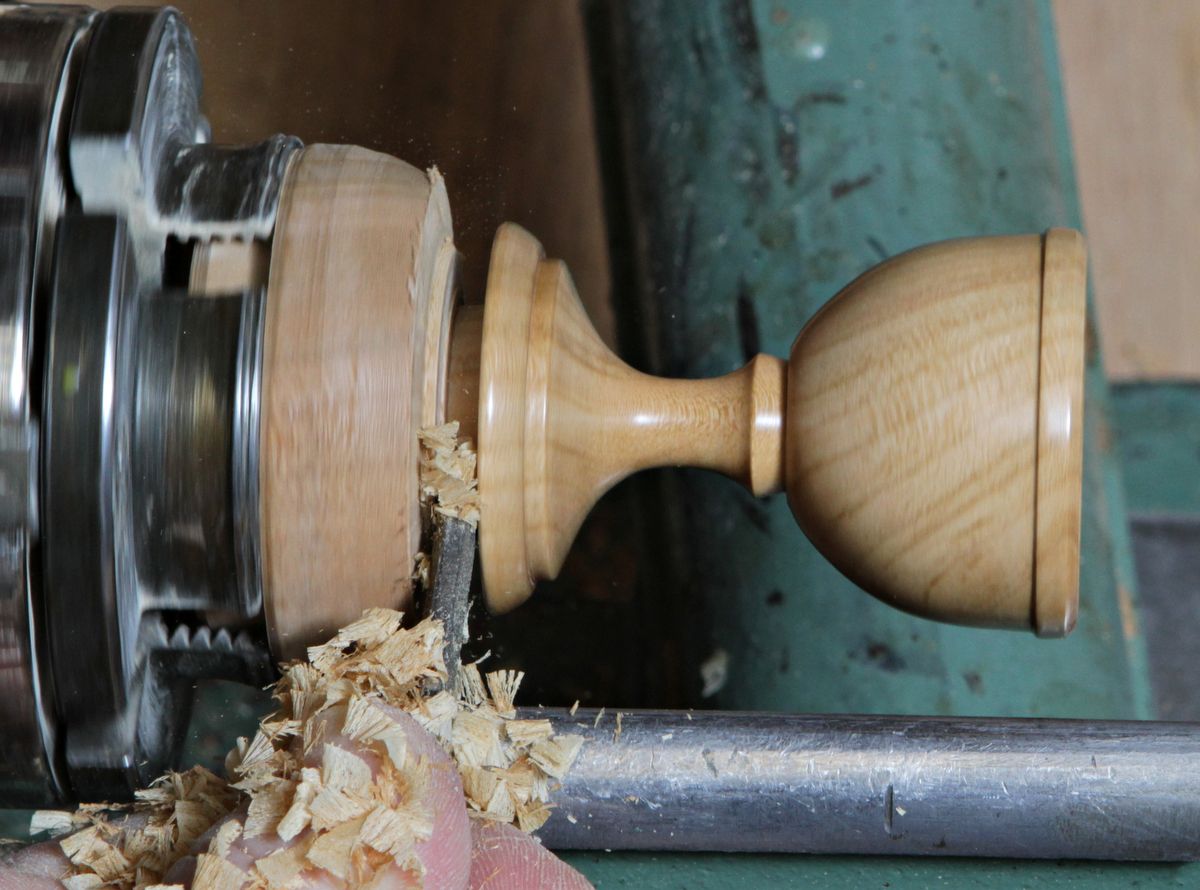End Grain Hollowing Project: Turning an Egg Cup

Perfect portion: A turned wood eggcup is a classic piece of treen.
Remember egg cups? Chances are good you have a glass or ceramic set somewhere in your kitchen cupboard, but they’re probably in the dark corner recess along with the wooden potato masher. Designed to hold a soft-boiled egg, they’re the only civilized way to eat an egg straight from the shell. Turning them is a great introduction to end grain hollowing and beginning turners don’t have to worry about making many finesse cuts. The skills learned from making these relatively heavy forms will help when you move on to making end-grain bowls, boxes and thin stemmed goblets. Food safe woods such as maple and cherry are a good choice for material and the tools I used included a 1¼-inch spindle roughing gouge, a 3/8 inch spindle gouge, a round nosed scraper and a parting tool.
The egg comes first: Start by measuring the diameter of your average egg and add about ¼ of an inch to determine the finished diameter of the cup portion of the egg cup. The large sized egg I measured was just over 1-5/8 of an inch. I mounted a 2-inch diameter blank about 4 inches in length and turned the cup portion to 1-7/8 of an inch.
Hollowing: Adjust the tool-rest so the very tip of the 3/8-inch spindle gouge is exactly at center with the tool in a horizontal position. Rotate the gouge so the flute is angled about 45 degrees. Keep the tool horizontal and push the gouge into the work piece about a ¼ inch and draw the tip out. This orientation produces a shear scraping cut and a thin shaving should be produced. Continue hollowing by pushing in about a ¼ of an inch each time, and move the tip through a curve to enlarge the opening in steps. Stop the lathe occasionally and use an egg to check your progress. Hollowing end-grain with this method is easy and leaves a decent finish in most hardwoods. Light shear scraping cuts with a round nosed scraper can improve the curve and leave a surface ready to sand. Back-hollowing is an advanced method of hollowing end-grain and Turning Boxes with Richard Raffan is an excellent DVD that details the technique.
Outside profile: Measure the depth of the hollow and transfer the mark to determine where the cup meets the stem. Make cuts to match the interior and aim for a consistent wall thickness. Sand and finish the cup portion and use the spindle gouge to define the stem portion. Sand and polish the stem portion before using a freshly sharpened parting tool to part off. Be sure to leave a flat or slightly concave base. It’s clear that the resulting form resembles a squat goblet. As skills improve, try making a goblet by mounting longer blanks and develop forms with thin walled cups and more delicate stems.
Preparing soft-boiled eggs: Boil water in a small saucepan and cook a refrigerated egg for about 5 ½ minutes. Use a butter knife and tap around the upper portion of the egg to crack the shell, and peel off the top. The newly turned eggcup should provide the stability you need as you dig-in with a piece of buttered toast!























Comments
Make it longer . A cup on each end , two cups {small and large } eggs. I made one for my aunt years ago ,she loved it and have not made one for 20 years.
Thanks, Great idea. You'll get a bit more practice hollowing and reverse chucking, too!
Log in or create an account to post a comment.
Sign up Log in